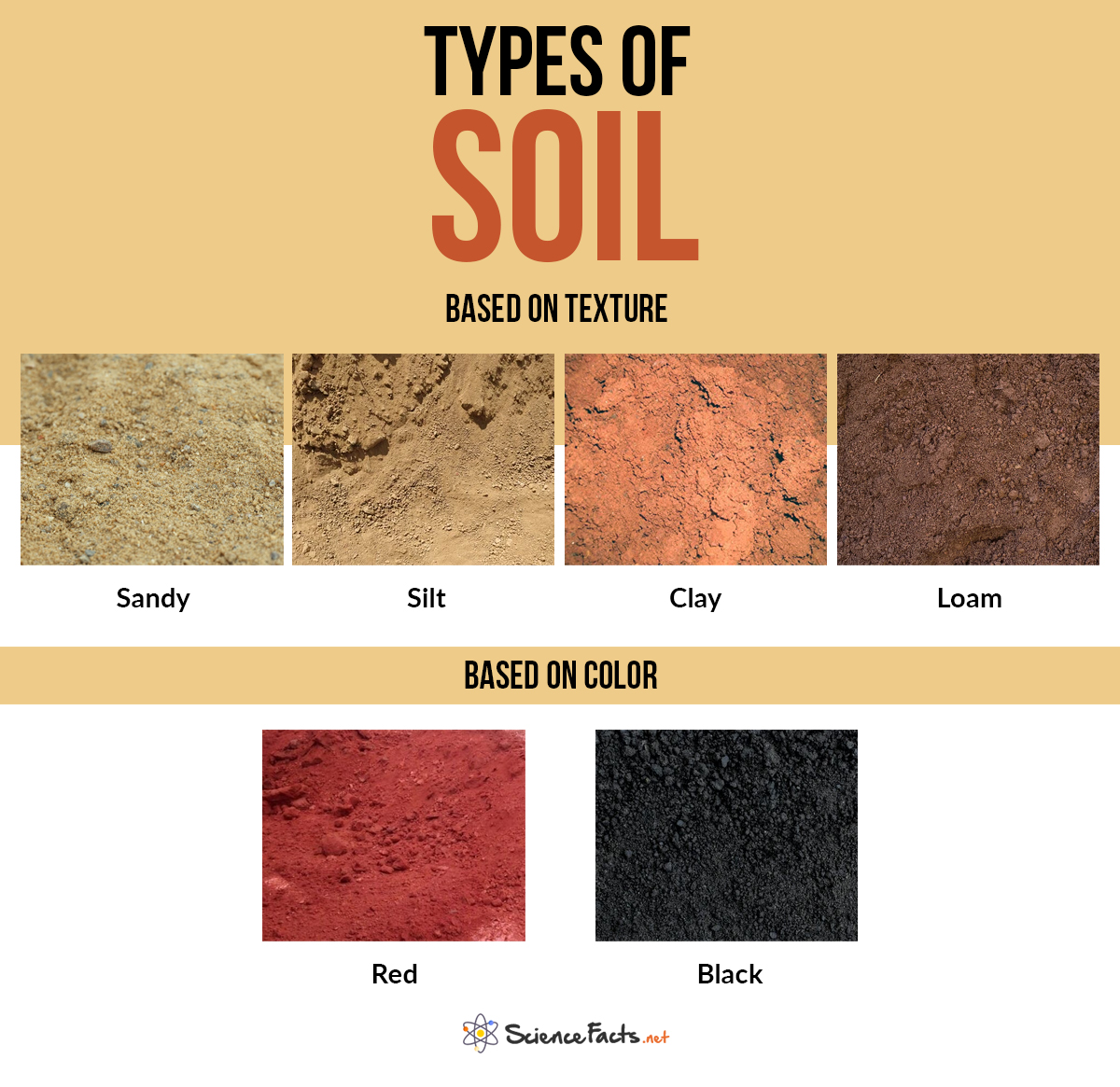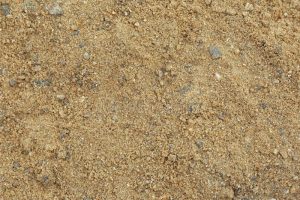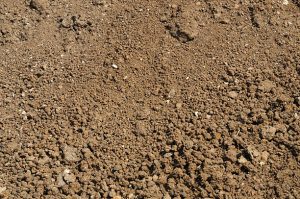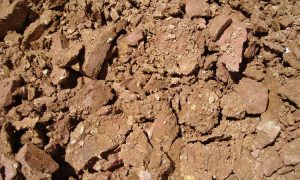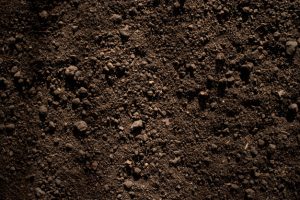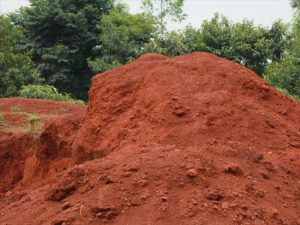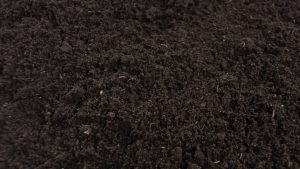Soil can be classified according to their texture, color, proportions, and different forms of organic and mineral compositions.
Different types of soil based on their texture
Different types of soil based on their color
Suitable crops: Melon and coconut
Silt Soil
Silt is a sediment material that is transported by moving currents. Its particles are smaller than sandy soil but larger than clay particles. With particles measuring from 0.002 to 0.06 mm, it is rich in nutrients with a high water-retaining capacity which makes it quite fertile. This type of soil is found near the river, lakes and water bodies. Suitable crops: Willow, Birch, Dogwood, and Cypress
Clay Soil
Clay soil contains the finest particle among all soil types measuring less than 0.002 mm. The particles in this soil are tightly packed, leaving very little or no space in-between. This leaves the plant roots with very little space to flourish. It is rich in nutrients and organic matter and can hold more water than most other soil types. Suitable crop: Plants having shallow roots like paddy, lettuce, chard, snap beans, broccoli, Brussels sprouts, and cabbage.
Loam Soil
Loam soil is a combination of sand, silt and clay soil which gives advantages of each of these soils. It has a high humus content, good water holding capacity and sufficient aeration. This gives the roots of a plant to get enough water, air, and space to grow making it suitable for cultivation. Mainly used for gardening, it is also referred to as the ‘gardeners’ best friend’. Suitable crops: Wheat, sugarcane, cotton, jute, pulses, and oilseeds. Vegetables also grow well in this soil. Suitable crops: Linseed, tobacco, millet, groundnut.
Black Soil
Black soil is formed from lava rocks. It contains a high percentage of humus and it is rich in clay. It is very fertile and its water retention capacity is very high. It is also referred to as ‘Chernozem,’ a Russian word which means black soil. Suitable crops – Cotton, sugarcane, oilseeds, chilly. Pedology 2. What is the formation of soil known as? Pedogenesis. 3. Which type of soil holds the most water (least permeable)? Clay Soil. 4. What type of soil is found in the desert? Sandy soil.
